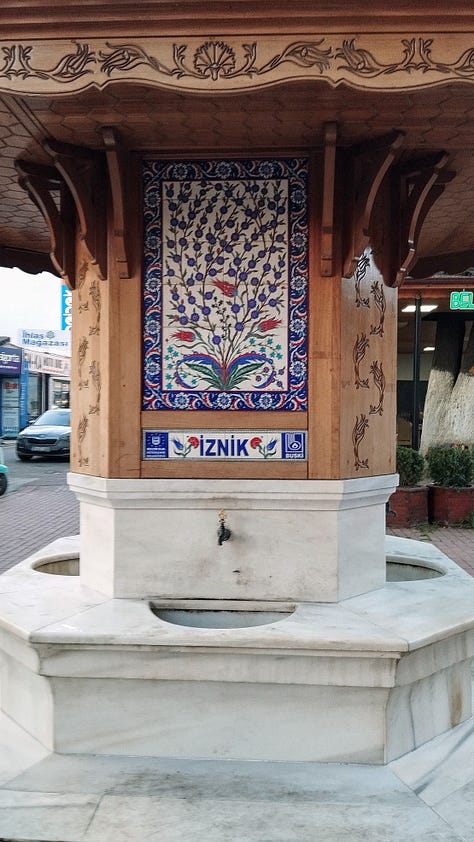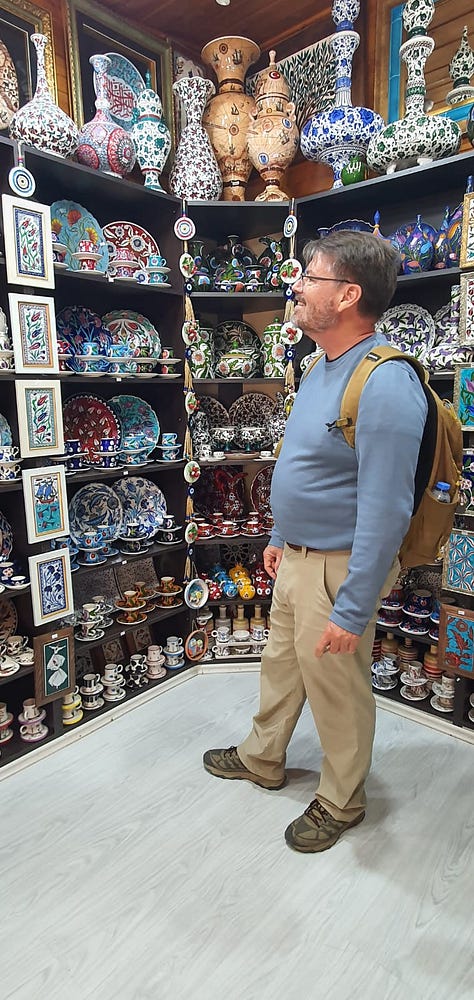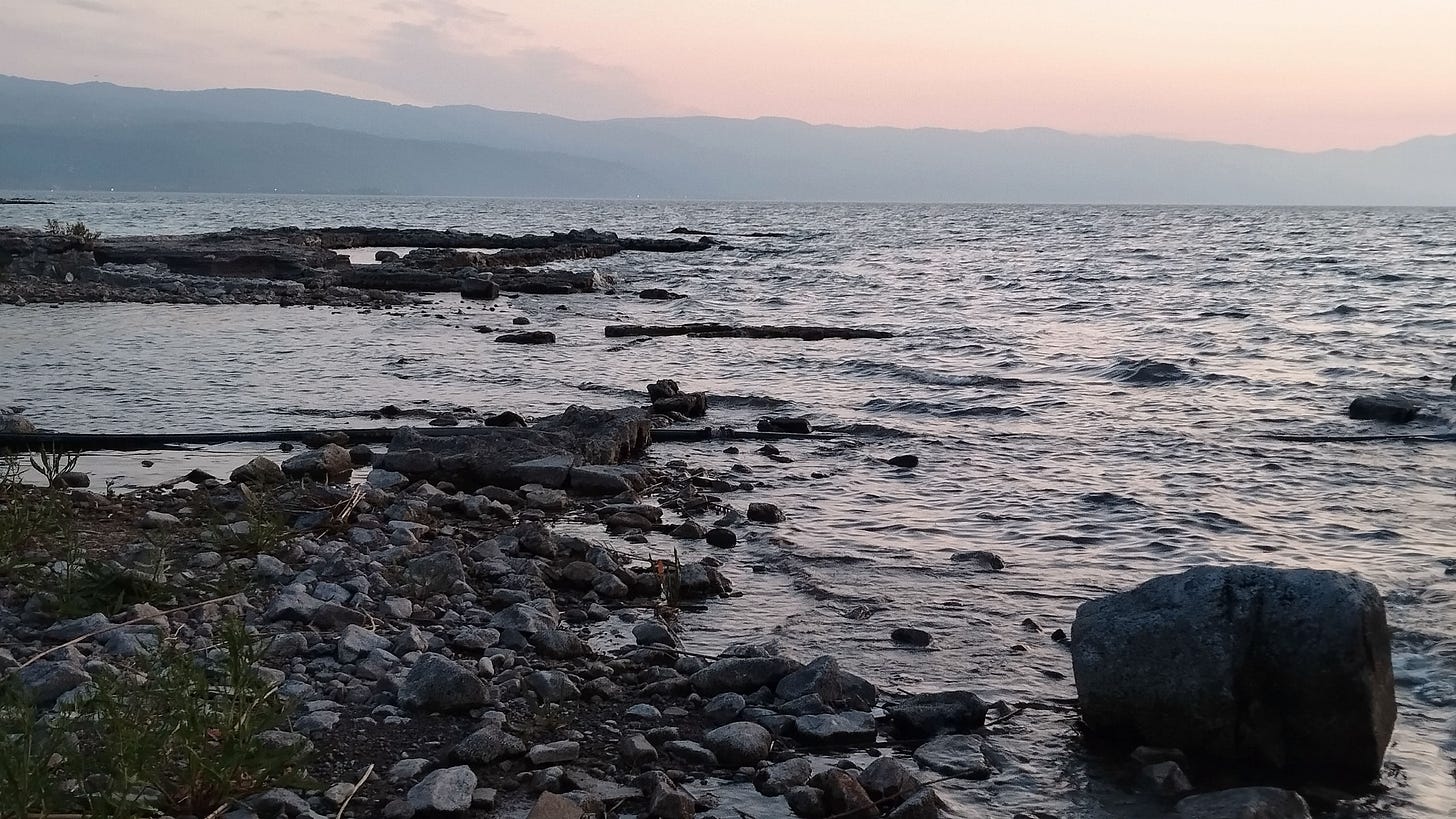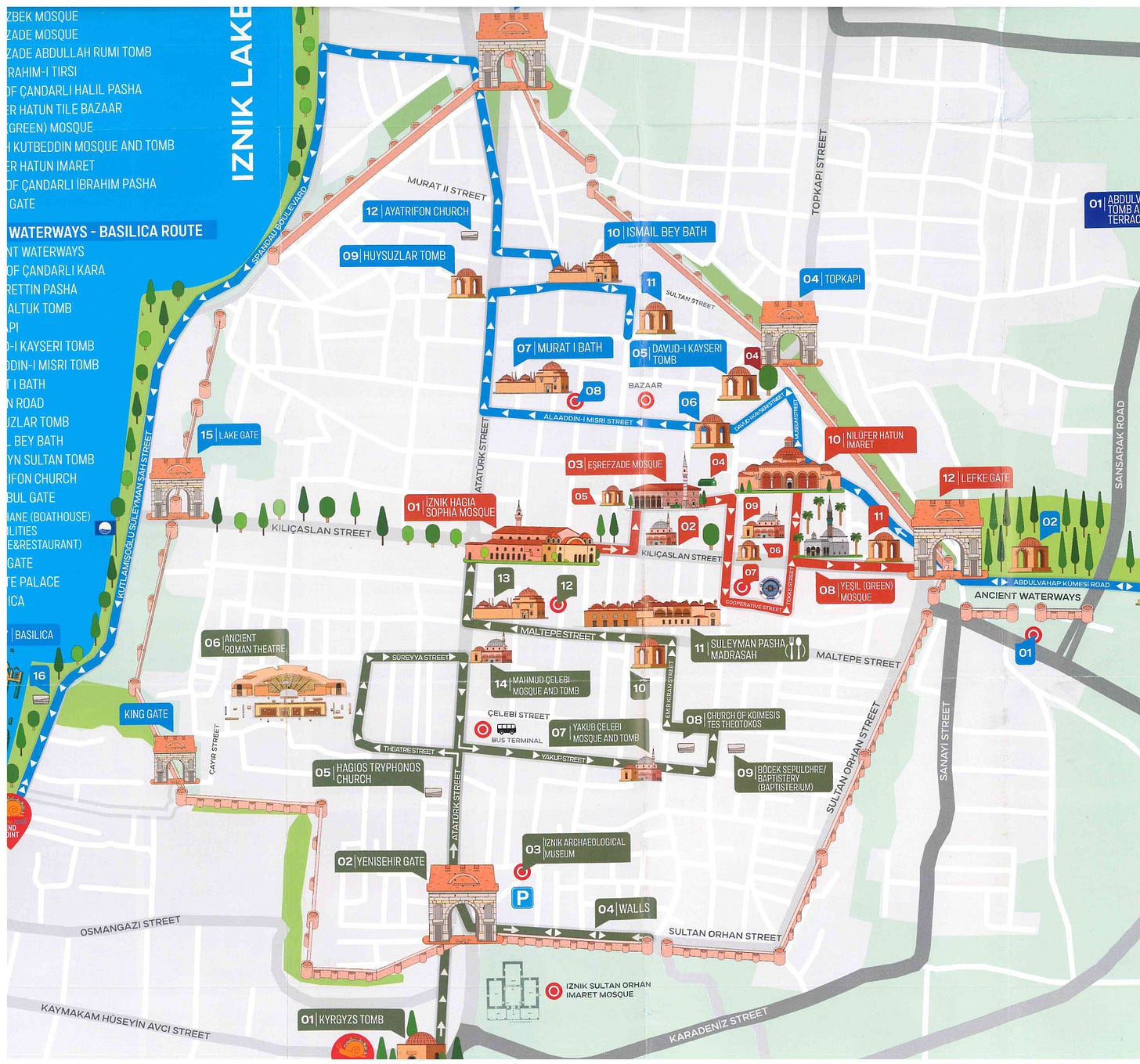Travelogue: Iznik, Nicea and Christianity's Great Council
This year marks the 1,700th anniversary of the Council of Nicea, the first synod after the legalization of the faith by Constantine I, and the crafting of the Nicene Creed
One of the first connections I made when I moved to Izmir in 2022 was with St. John the Evangelist Church. I have been a Christian longer than I have spoken English, and St. John’s offered me the chance to do both — in an historic stone chapel in Alsancak, no less.
In the States, I had attended a Methodist Church, so the leap to an Anglican community was not a great one, but it was one with a few changes: there was a photo of Queen Elizabeth II in the fellowship hall, the service was full of pageantry (drapery, silver chalices, chaplain’s robes), and many of the hymns were new to me — familiar verses were often matched with unfamiliar melodies.
One significant difference was the creed, which we repeated after the sermon every Sunday. In my American church, we had recited the Apostles’ Creed every Sunday; at St John’s we recited the Nicene Creed instead.
The creeds sound alike (a closer study of the language of the two creeds will arrive in a Substack after this one). But the Apostle’s Creed, at 105 words, was an easy study — one which I had memorized within a few months of learning it. The Nicene Creed was harder to learn: not just longer (222 words) but full of additional descriptions of Jesus that seemed to repeat themselves.
As I looked further into the Nicene Creed, I learned that the creed had been written in 325 AD. I immediately understood that within a few years from my arrival, its 1,700th anniversary would arrive.
I hoped to stay in Turkey until that date. And I did.
Nicea: the first Christian conference
During my spring break from school this year, I met my father and fellow history-lover in Istanbul for a few days in the city, then set out for Iznik, the modern Turkish city (one interpretation of the name of the city is that it comes from iz Nikea, the old Turkish way of saying ‘to Nikea’, just as Izmir could once have meant iz Smyrna or ‘to Smyrna’) or iz Stanbul was the phrase for ‘to the city.’
The claim to Nicea’s 1,700 years of fame comes from a council called the year after the Western Roman emperor, Constantine, had defeated Licinius, the ruler of the eastern empire at the Battle of Chrysopolus, re-uniting the empire. Keeping the empire united was a task he hoped that the small but well-organized Christian community might help him with. Christian churches spanned beyond the borders of the empire, with elders, bishops and metropolitans providing an effective structure.
Instead of a unified church, Constantine found an organization deeply divided over the nature of Jesus. Since the Resurrection, his followers had worshiped him as “Lord,” and the idea of the Trinity was already accepted. But an Alexandrian elder named Arias had used scripture to claim that Jesus had been created at some point after The Beginning — that he was not eternal with the Father and the Holy Spirit as orthodox believers claimed.
With the church facing a split, Constantine summoned all Christian bishops to Nicea — and all of them came: from Asia, from Africa, and from Europe, 316 in all. The Emperor chaired the council. Whether Jesus had been created after God or whether he was “true God from true God, begotten, not made, of one being with the Father” as the Nicene Creed developed there would affirm.
Surrounded by Roman Walls
The most remarkable element of my visit to Iznik were the Roman walls that still surround the city. About 85% of the 5 km of walls that once surrounded the town are till standing: a 10m-high inner wall with huge bastions every 100 meters, along with a 5m-high outer wall. In fact, visitors can follow a path between the two walls following the northern arc between the western and eastern gates.
Turkey has many cities with Roman ruins. But while Ephesus and Pergamum have more remarkable streets and temples, Iznik still has its walls (I have hiked along some remaining walls of Ephesus, but their route is incomplete.)
The city is laid out in a grid, with the main streets intersecting at the central point of the elliptical walls. My hotel was near the lake and the western gate of the city. My family and I walked along the west-east axis of the city to the eastern gate, known as “the fortress” because of its many defense towers.



We walked along the southeastern arc of the wall to the south gate, known as Yenişehir (new city). The city museum lies a few meters from the south gate, and it exhibits, housed in a beautiful, modern museum, told the city’s history from pre history to the Ottomans (1378-1923).
Our route continued northwards from the south gate, through the center of town, where we stopped to tour the Hagia Sophia, a late-4th century church that now serves as a mosque. It is a beautiful place, sunken three meters below the street beside it, marking the depth of the city 1,650 years ago. It is also a nice mosque to tour, as the center is carpeted for prayers, but the galleries surrounding the nave are open to tourists to explore without removing their shoes.
On our way to the “Istanbul Gate” at the northern end of the city, we stopped at the Murat Baths, a huge bath complex that now houses a museum dedicated to Iznik Tiles. The city hit new heights during the Ottoman Empire thanks to a building boom spurred by Sultan Suleiman the Magnificent (1494-1566), who ushered in a new era of mosque-building.
Those who have visited Suleiman’s mosque (built from 1550-1557) or the grand Istanbul mosques that were built in its likeness — the Sultanahmet or “Blue” Mosque (1609-1617) and the New Mosque (1597-1665) — have noticed the beautiful ceramic tiles that cover the interior walls and pillars. These tiles were “Iznik tiles,” designed here, explosions of red tulips, blue chrysanthemums, and other beautiful designs.



And because the peak era of Iznik artistry coincided with the expansion of Ottoman lands, the tiles aren’t unique to Istanbul. They can be found in mosques in Medina, Jerusalem and Cairo, as well as in monasteries on Mount Athos in Greece.
The museum also has some fascinating insights into history that I didn’t learn at the city museum, featuring a visit that Mustafa Kemal Ataturk made to Iznik, and sharing other interesting facts about the area.
The “Istanbul Gate” marked the northern end of the city. From there, we returned to our hotel, hiking between the walls of the northeastern arc of the walls.
All told, the walk around the walls was about 7 km, but with breaks for a meal and tea, plus stops at the two museums, it didn’t feel long.
The Council Basilica
The basilica where the council met lies about 500m from the western “lake gate” of the city. Dedicated to Saint Neophytos, a Christian martyr who had been buried on the lakeside near where he was slain in 305 CE, the church slipped into the lake waters during an earthquake in 740. Today it lies 20m off shore, its walls rising just enough above the water to mark its outline.

When we were there in April 2025, construction was underway on a visitors’ center and a walkway that would lead visitors across the water to look down into the waters at this historic place.
In and around Iznik
We traveled by bus from Istanbul’s Esenler Bus Station (Büyük İstanbul Otogarı) in the city’s European quarter for about $10 each. The trip takes 3 1/2 hours, stopping along the way in Izmit (ancient Nicomedia for the historically minded). A drive in a rental car is 160 km.
It wasn’t easy to find a hotel online, but I liked the hotel I found: the Seyir Butik Otel (there are plenty of hotels in the city, I assure you, as the lake is a popular place for recreation, history or not).
I spent two nights and a day in the small city, and I would recommend the city as a weekend destination — if I had had another day, I would have visited some of the tombs and cemeteries outside the city.
I did not see a lot of boats on the lake when I was there, but there are piers for fishermen.




Anatolia has a huge history in every corner of itself. I am from Izmir, in my 30s and still founding out new stories about this holy and beautiful land.. Enjoyed of reading!